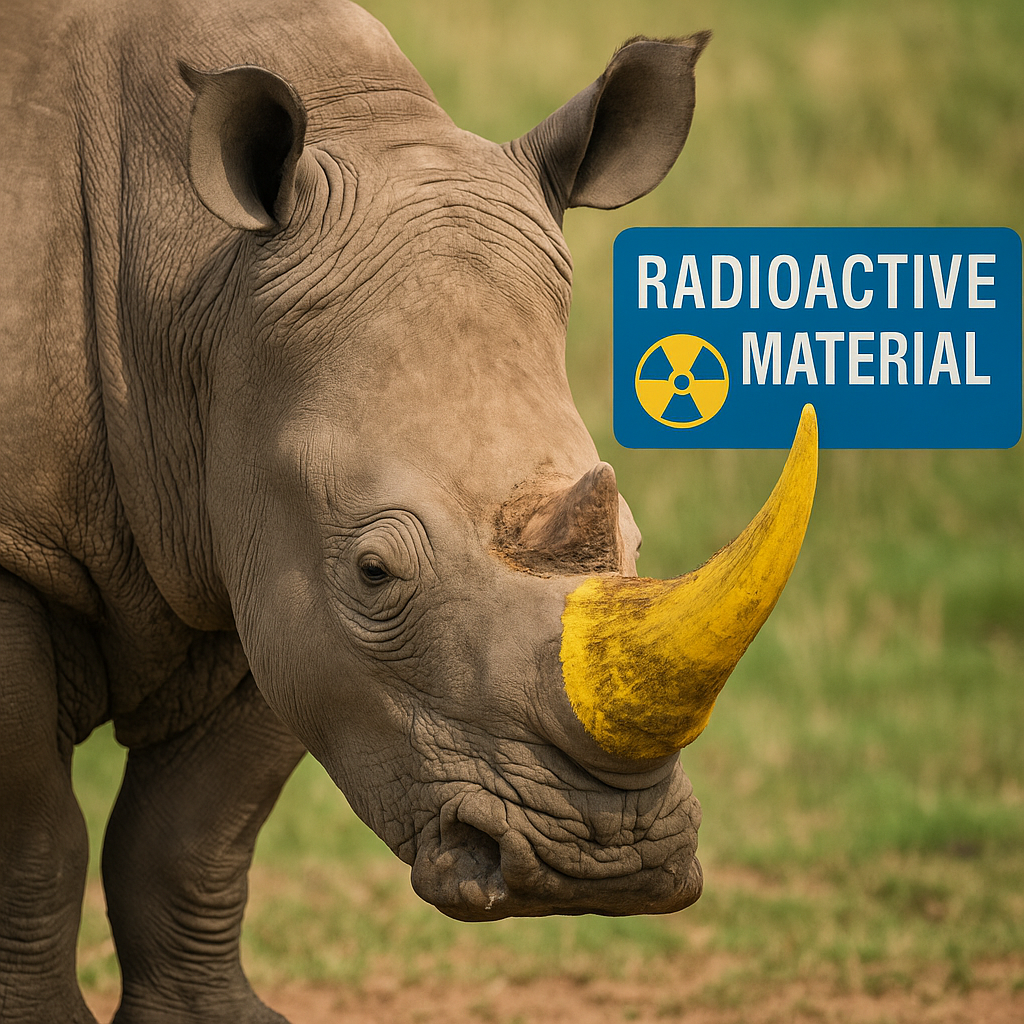Scientists Inject Rhino Horns with Radioactive Isotopes to Stop Poachers
South Africa – August 6, 2025: In a groundbreaking conservation initiative, scientists in South Africa have begun injecting rhino horns with small amounts of radioactive isotopes to deter trafficking. The method, part of the newly launched Rhisotope Project, aims to make the horns detectable by radiation scanners at international borders.
🔬 Pilot Initiative Expands to Live Rhinos
The University of the Witwatersrand launched the project after a successful trial involving 20 sanctuary rhinos. In the latest phase, five additional rhinos were injected in a planned expansion to protect South Africa’s estimated 16,000-strong rhino population. Conservationists say even very low isotope levels trigger alarms in customs systems without harming the animals.
📏 Safe and Detectable
James Larkin, Chief Scientific Officer of the Rhisotope Project, stated: “We have demonstrated beyond scientific doubt that the process is completely safe for the animal and effective in making the horn detectable through international customs nuclear security systems.” He added that even a single horn at low radioactivity levels set off radiation detectors during shipping container scans.
📈 Rhino Poaching Crisis
The global rhino population has plummeted from 500,000 in the early 20th century to just 27,000 today. South Africa contains the majority of survivors, but around 500 rhinos are killed annually by poachers. Horn demand remains high in illicit markets exceeding the value of gold, platinum, diamonds, and even cocaine.
🧪 What the Rhisotope Project Means
- Radioactive isotopes are added to rhino horn, making illegal trade easier to intercept.
- Method confirmed safe for living animals in veterinary trials.
- Scanners at airports and seaports can detect horns, even in sealed containers.
- Conservationists are urging widespread adoption across reserves and wildlife parks.
🧭 Broader Conservation Implications
Experts view this as a significant advancement in combating wildlife crime. The technology may be adapted for other endangered species such as elephants and pangolins. While some raise ethical questions about injecting animals with radioactivity, the method is non-invasive and strictly regulated.
By Fidelis News
📍 Filed under: World News, Environment, Science, Conservation
📰 Fidelis is free to read, but not free to produce.
☕ If this reporting matters to you, support us here:
👉 BuyMeACoffee.com/fidelisnews



